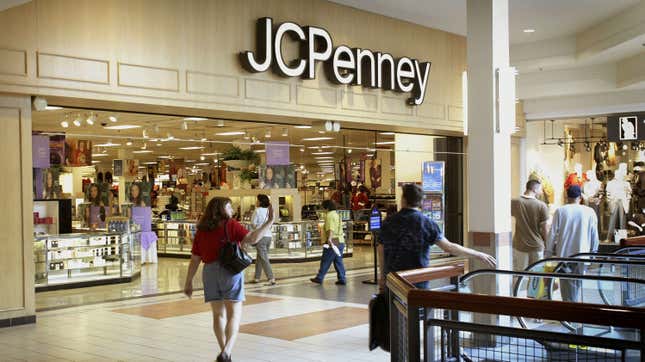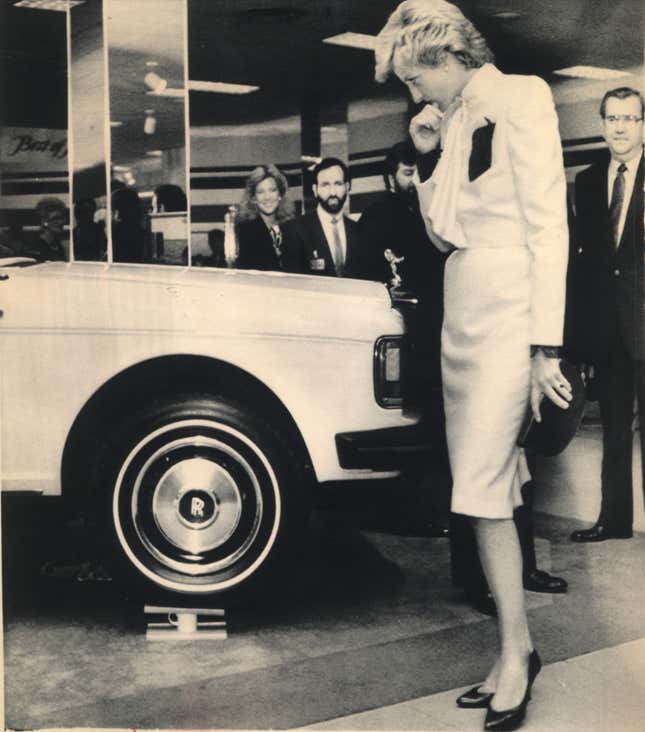Boomer Favorite J.C. Penney Is Facing Extinction
In Depth

During my youth, one of the best things my mom could tell me was that we were going to spend the day at the Palisades Mall in West Nyack, New York. The place felt huge; it had a Ferris wheel overlooking the food court and there was also a Chili’s on the fourth floor. But the worst part of any mall trip, inevitably, was the hours-long sojourn through the many levels of J.C. Penney. The racks of clothes felt unending, and any time we got close to an exit some new section of merchandise would catch my mother’s eye. But according to a report in Women’s Wear Daily, my experience may be going the way of the dinosaurs as malls across America prep to lose the perennial anchor store, J.C. Penney, which faces “bankruptcy and possibly extinction.”
In 2019, “the company lost $268 million compared to a net loss of $255 million in 2018,” according to WWD. Retail experts who spoke to WWD believe the store’s issues began long before last year’s losses. While Penney’s leadership attempts to claw their way out of a hole, the impact of Covid-19 is one more blow the business can’t withstand.
More than just the big store at the local mall, J.C. Penney was lauded for its appeal to “middle America.” They sold “work clothes that the working class could appreciate,” one expert told WWD, “It had no airs.” Its high quality and affordability separated it from other big-name stores that skewed more expensive. In 1987, Penney’s moved its headquarters from Manhattan to Plano, Texas, purchasing a massive complex that sat on over 400 acres of land. “By making the move, Penney’s capitalized on the sale of prime real estate, escaped New York taxes and moved to a lower-cost location that was centrally located for the national chain, making it easier to visit more stores for executives.” However, the move to Texas eliminated the “legendary” New York merchants who “dictated to the wholesale community and wielded a lot of power.” Retail analyst Walter Loeb told WWD that the move was “ego-driven” and that management was trying to copy the campuses of their competitors Sears and Kmart, “particularly Sears.”

Haim Dabah, an entrepreneur and apparel industry executive, argued that JCP eventually lost sight of the customer and was unable to shift with the times, “In the mid-Nineties, companies needed to move from merchandise-centric to consumer-centric, and Penney’s never made that move,” Dabah told WWD. “They were not successful in making their merchandise look precious enough in the eyes of the consumer.” It’s an argument that anyone who has been to a J.C. Penney in the last few years can easily understand. In theory, who wouldn’t want a store that has appliances, clothes, shoes, perfume, cosmetics, and accessories all under one roof? But with a sea of options, nothing looks interesting after a while. Unlike other department stores, JCP’s vast rows of merchandise often feel overwhelming: there’s so much of everything that shopping becomes a task rather than a leisure activity.
The issue of the store’s unappealing overflow was one JCP’s current CEO, Jill Soltau, aimed to correct. During her time with the company, she’s been “recasting the women’s selling floors with an easier-to-shop, lifestyle format.” Hard as Soltau may try to turn the ship, it’s hard to undo the damage of former CEO Ron Johnson, which WWD writes, “nearly destroyed the company.” Johnson sought to “modernize” JCP stores when he began in 2011, a plan that included, “[discontinuing] coupons and price promoting, and [shifting] to everyday low pricing.” The result was a significant loss in customers and an increase in existing debt.
It’s hard to imagine a future in which J.C. Penney exists, much less a future wherein it takes up every single floor of a mall. Should the company go completely under and lose the converted “anchor store” position, smaller shops could suffer from the loss of foot traffic. A shop like Auntie Annie’s, which I’ve never seen outside of a mall or highway rest stop, likely pulls in most of its mall customers by wafting the sweet smell of pretzels through larger shops like J.C. Penney or Sears. If by some miracle, the business survives the pandemic and the debt, and figures out an identity–feats that could take years—it certainly won’t be the store most shoppers remember. It could also mean an entirely different landscape for malls as they’re left to come up with contingency plans for what to do with all the square footage J.C. Penny will leave behind in its wake.
Read the full story on Women’s Wear Daily.